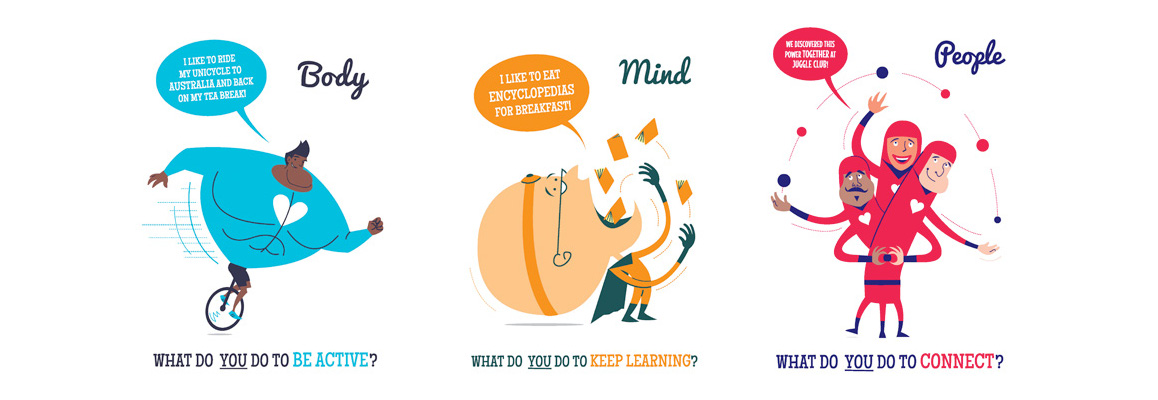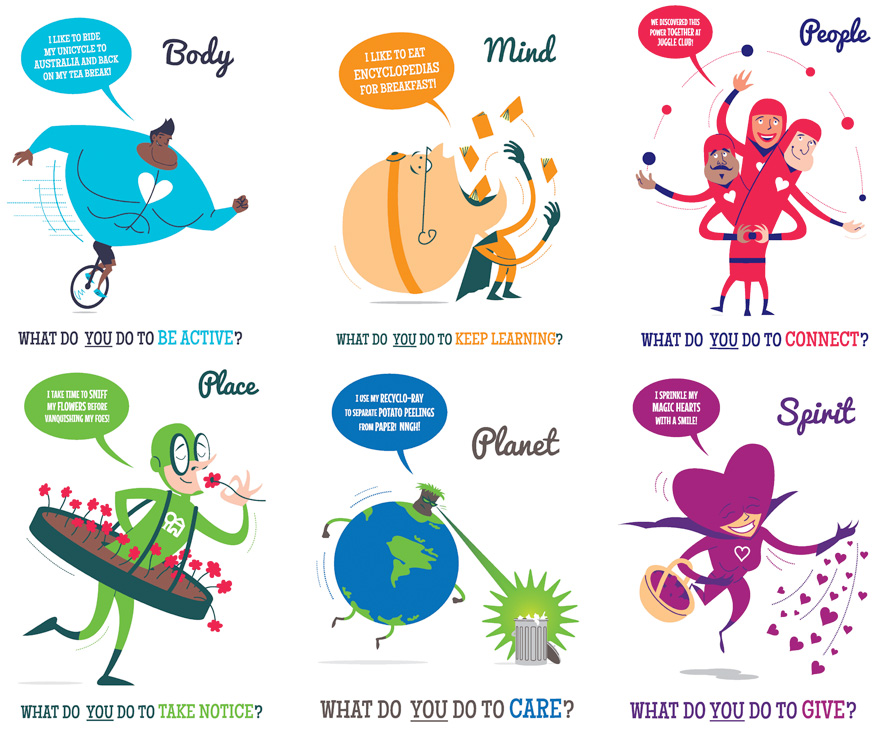Kent County Council Public Health
Case Study

Kent County Council Public Health
A notable public shift within the national approach towards prevention of mental illness, and the promotion of well-being, led Kent County Council Public Health to commission a number of public services and projects. This became the Mental Well-being Programme; one of the first prevention strategies of its kind amongst local authorities, it was unique both in the level of investment the programme received and the scope and depth of the evaluation that was completed.
The programme was made up of six projects, of which one was the Six Ways to Well-being campaign and another was the happier@work Workplace Well-being pilot. Both have the Wheel of Well-being at their core.
The ‘Six Ways to Well-being’ campaign, was how Kent branded the Wheel of Well-being (WoW) programme. The campaign used the WoW impact model to articulate the project aims and how it intended to achieve these, and bring about positive change in approaches to mental health.
The project was an exercise in social marketing that employed different media forms and was framed by the Wheel of Well-being. It sought to encourage people in Kent to make small changes in their day-to-day actions to improve their mental well-being and build their resilience.
Testimonial

The Council launched a public facing campaign aimed at improving well-being and encouraging participation in well-being activities, delivered through the Live It Well website, social and local media, communications and workshops.
The campaign comprised three main strands. The first consisted of one day WoW workshops run initially by SLaM and later the KCC Public Health team. A second component of the campaign consisted of a communications strategy including press releases and a series of short films about Kent residents engaging in the Wheel of Well-being. Finally, the website contains a comprehensive searchable directory of health and well-being resources in Kent that was regularly updated as well as hosting details of meeting minutes and updates from mental health action groups. Cutting across all three of these elements was the use of social media tools to publicly promote the messages, the seminar series, and the films as well as link to other health and well-being news, activity or partners.
The WoW was also adopted by LV21 a leading arts organisation as part of the county mental wellbeing drive. LV21 have used the WoW toolkit in creative ways across the arts locally to raise awareness of the campaign and increase participation in the arts amongst young people. They have held free workshops and activities to inspire the adoption of daily creative practices to reinforce mental wellbeing.
The campaign’s reach was broad, almost 400 people attended the one day WoW workshops (the majority having a pre-existing professional interest in mental health), there were an estimated 143,400 hits of the Liveitwell website, and 246,255 reached through Twitter impressions. The social media campaign was successful, and saw steady increases in the number of Twitter followers and Facebook likes. Evaluation feedback data suggested that people were overwhelmingly satisfied with most aspects of the one day WoW workshops; at least 80% felt that it helped them understand the theory behind and practical activities of the Campaign, to learn about resources available, and how to communicate the Wheel of Well-being messages further.

 Sign up / login to see, save and share well-being tips, activities and places. Track your progress on your Wheel of Well-being
Sign up / login to see, save and share well-being tips, activities and places. Track your progress on your Wheel of Well-being